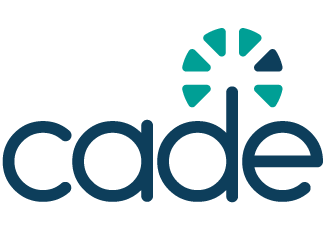Cryptocurrencies
The story of digital currencies is a continuation of the long-running saga of economics, markets, and commodity exchange in human society. Looking back at the history of the internet, we can conclude that public-key cryptography and digital signatures enable digital currencies.
Digital currency can either be centralised (with the central control point of the money supply) or decentralised, where supply control is regulated by the consensus and verified by a network of users.
The centralised form of digital money is what we know today as an institution of ‘e-money’. Pushed by technological advances, the centralised digital currency will, in the imminent future, become the main tool for national banks, as the central bank digital currency (CBDC) starts emerging.
Decentralised digital currencies include cryptocurrencies and tokens issued online without financial security mechanisms.
History of digital currency
E-money
The Bank for International Settlements defines e-money as ‘stored value or prepaid payment mechanisms for executing payments via point-of-sale terminals, direct transfers between two devices, or even open computer networks such as the internet’. Electronic money is a floating claim that is not linked to any particular account. Examples of e-money are bank deposits, electronic funds transfers, and payment processors. E-money can also be stored on (and used via) mobile phones or in a payment account on the internet. The fast introduction of e-money has led to governmental regulatory activities. Hong Kong was among the first jurisdictions to regulate e-money, allowing only licensed banks to issue stored-value cards. Since 2001, the European Union has implemented a directive on the taking up, pursuit, and prudential supervision of the business of electronic money institutions (E-Money Directive – 2009/110/EC).
- See also: Digital payments and financial services in Africa: National policies | Continental and regional initiatives
Virtual currency
To describe decentralised forms of digital currency emerging online, regulators started using the term virtual currency. In 2012, the European Central Bank defined virtual currencies as a ‘type of unregulated, digital money which is issued and usually controlled by its developers, and used and accepted among the members of a specific virtual community’. In 2014, the European Banking Authority defined virtual currencies as ‘a digital representation of value that is neither issued by a central bank or a public authority, nor necessarily attached to a fiat currency, but is accepted by natural or legal persons as a means of payment and can be transferred, stored or traded electronically’. This refers to cryptocurrencies, and in particular to stablecoins – cryptocurrencies issued by private companies.
Stablecoins
One of the most prominent efforts to build a global stablecoin was from Meta’s Diem Association and Libra (later Novi) project. Announced as a cross-boundary global digital currency, the project was scrutinised by US policymakers and financial institutions, over concerns that it might interfere with US monetary policy. US officials did not allow Meta to issue its own native coins without going through strict banking regulations. The Novi project officially shut down the digital currency research centre, and the Diem Association sold the assets in both USA and Europe.
Central Bank Digital Currency (CBDC)
Looking to respond to a fast-changing environment, national central banks started working on digitised versions of their respective currencies. There are many advantages of ‘digital only’ currencies as they have proven to be fitter in the digital age. Today’s economy, and users alike, are online, global, and fast-moving. Some of the old rules on cross-boundary money transfers have recently changed as e-commerce and e-trade is advancing. Inclusive finance will also play a role in shaping the final form of a central bank digital currency. According to the report from the Bank for International Settlement, there are 28 pilot programmes around the world, and 68 central banks have communicated publicly about their work on the central bank’s digital currency. Some of the most prominent and tested programmes are China’s e-yuan and a proposal for the digital euro. The first step for CBDCs will be to provide an instant payment system for its users while preserving security. As a long-term goal, this technology is envisaging ‘programmable’ or ‘smart’ money, a currency that can have programmable features. The European Central Bank is foreseeing that the EU CBDC will be fully ready by 2025. China’s digital currency e-yuan was tested in a four-year project involving businesses, households, and the entire city. China has not yet put in motion a digital version of its currency but showcased the product in front of the Beijing Winter Olympics. At the start, CBDCs will be used alongside current cash and banknotes. CBDCs will replace most user deposits in retail banks. Therefore, banks refer to this form of digital currency as a retail CBDC.
- See also: CBDCs in Africa
Policies arround the CBDC
Two years of joint work between the Bank for International Settlement and the highest financial body of the G20 have resulted in a document on ‘Public Policy Principles for Retail Central Bank Digital Currencies’. The document was written in the form of recommendations for national banks and governments. The key focus of national banks will be on providing fast and reliable cross-boundary money transfers, security of users, and privacy of transactions. All major economies in the G20 have expressed full support to the CBDC developments.
Main issues ariound CBDC
The issues around the privacy of transactions should be considered closely. CBDC critics point to the danger of citizen tracking or full control of money by central authorities. There are also many security risks to such systems.

Central bank digital currency model (Bank of England)
Cryptocurrency
In the world of finance, regulated markets and the privacy of financial actors are crucial. Fair and constructive financial institutions acting as intermediaries are the safeguards of these principles. In most cases, these are state regulatory agencies. However, something has changed in the digital era. Governance is taking a new form of teamwork and networking. Double-spending is a potential problem that is unique to the digital environment, as digital data can be reproduced relatively easily. The world of finance needed a system in which the sender would send digital data and the receiver would receive a unique copy. The first fully functional cryptocurrency, bitcoin, did exactly that; solved the double-spending problem. This idea was presented in a short technical paper entitled ‘Bitcoin: A Peer-to-Peer Electronic Cash System’, published on 31 October 2008 by anonymous developer Satoshi Nakamoto. The main invention of bitcoin was to introduce the central ledger of all transactions, known as a blockchain. It allows all peers in a network to verify every transaction ever made in the bitcoin system. The cryptographic hashing function serves as proof for verifying transaction chronology and is a reason for the name cryptocurrency. This internet-based exchange medium has properties similar to physical currencies, however, it allows for instantaneous transactions and borderless transfer of ownership. Cryptocurrencies created a lively environment of digital natives trying to invent a global online payment system using open-source software. The trading of cryptocurrency increased rapidly, followed by growing interest in blockchain technology by a wider group of business users. Bitcoin and other cryptocurrencies like stablecoins started to gain popularity, and the industry of exchange and custody of such assets started growing fast. Today, the US-based online exchange Coinbase (established in 2012) is a publicly listed company, with a market valuation bigger than the New York Stock Exchange, $86 billion.
- See also: Cryptocurrencies in Africa
From anonymous money to digital gold
Stellar resilience to cyberattacks, paired with its anonymous nature, introduced bitcoin to the darker side of the internet: the darknet, part of the deep web. The deep web is a term for an online space of markets and websites not indexed by Google or other search engines, that you need a specific type of browser to access (Tor). Bitcoin soon became the preferred currency on darknet markets that offered illegal goods, from pirated video materials to weapons and drugs. For years, more than 70% of bitcoins were used on darknet markets. Different ideas around blockchain design and use prompted the emergence of other new cryptocurrencies and the so-called crypto industry grew bigger and bigger. After 2016, many online retailers started accepting bitcoin as a method of payment. This raised the price of bitcoin again. At this point, bitcoin underwent a major transformation in its main purpose, from electronic money to an electronic store of value, or digital gold. Many individuals and companies started thinking of it as a long-term investment. Wild swings in value and constant price rises attracted Wall Street and major financial players. The large fluctuations in price proved that bitcoin was not quite suitable as a global currency at that moment, but rather, could be used as a global investment strategy. In 2021, the public discovered, from disclosure to the US SEC, that Tesla, one of the largest global companies, had purchased US$1.5 billion worth of bitcoin to add to its investment portfolio.
Regulation
Global regulations around cryptocurrency are yet to be fine-tuned around blockchain tech and central banks’ digital currencies. Regulations so far aim to ensure consumer protection and address security concerns around money laundering and terrorism financing. Global Financial Action Task Force (FATF) rules and a set of Know-Your-Customer (KYC) financial standards are imposed on online exchanges, in order to identify who is trading cryptocurrency online. Regulations concerning tokens, non-fungible tokens (NFTs), and other digital assets are also being strengthened worldwide, with some financial institutions providing detailed rules for tokens used as security in financing. Switzerland is one of the first countries in the world to introduce a regulatory classification of tokens issued via blockchain. The Swiss Financial Market Supervisory Authority (FINMA) recognises three types of tokens:
- payment tokens (cryptocurrencies) – means of payment or value transfer
- utility tokens – provide access to application or service
- asset tokens – debt or an equity claim against the issuer
Main issues
There are many comparative advantages of cryptocurrency relative to traditional forms of online financial transactions. Using one source (the internet) to connect to a unified global financial system may sound like a futuristic idea, but with digital currencies, it is not that far away. At the same time, there are many warnings about cryptocurrencies that could be misused for illegal goods and services, fraud, and money laundering. The anonymity associated with the use of virtual currencies (such as Monero, for example) increases the potential for possible misuse.









